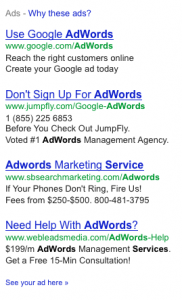
Infringement of a trademark by a proprietor requires that the trademark is used in such a manner that suggests that the trademark is associated with that proprietor’s goods. Only because a trademark is used in an advertisement by someone who is not a registered proprietor of the trademark, or a permitted user of the trademark, does not by itself amount to infringement of the trademark. Displaying the trademark in the advertisement is not ipso facto infringement Moreover, the injury caused to the plaintiff would be irreparable and unable of being compensated with damages. However, the court granted an interim injunction in favour of the plaintiff, as the plaintiff was able to establish a prima facie case, that the balance of convenience was in his favour as the effect of an advertisement cannot be repaired easily. For instance, in the Colgate case, the plaintiff was unable to prove that his mark was registered and thus did not press upon his contention of violation of Section 29(8). An unregistered trademark that is being disparaged in the advertisement is also entitled to get an injunction against the disparaging advertisement. However, this does not mean that he is remediless. If the trademark is not registered, the proprietor cannot rely upon Section 29(8). Registered ™ + Advertisement + Unfair Advantage of and contrary to honest practices/Detrimental to Distinctive Character/Against reputation = Infringement Section 29(8) may be represented as the following equation: Is against the reputation of the trademark.Is detrimental to the distinctive character of the trademark or.Takes unfair advantage of, and is contrary to honest practices in industrial or commercial matters or.Section 29(8) of the Act provides that a registered trademark is infringed by way of advertising if the advertisement: Section 29 of the Act deals with situations in which the use of a registered trademark in the course of trade is considered an infringement. This understanding is arrived at from a combined reading of Section 2(1)(t) and Section 2(1)(w) of the Act. A registered trademark is one that is on the Register of Trademarks and is actually in force. unregistered trademark in advertisingĪ trademark can be registered or unregistered. This understanding is arrived at from a combined reading of Section 2(1)(m) and Section 2(1)(zb) of the Act.Įxamples of trademark: Implications of using a registered vs. What is known as a trademark?Ī trademark includes a device, brand, heading, label, ticket, name, signature, word, letter, numeral, shape of goods, packaging or combination of colours or any combination thereof, which is capable of being represented graphically and capable of distinguishing the goods or services of one person from those of others.

Colgate Palmolive 2004 (29) PTC 401 (Del) (“ Colgate case”).

Hindustan Coca Cola Ltd., 2003 (27) PTC 305 (Del) (DB) (“ Pepsi case”) and the judgment of the Delhi High Court by learned Single Judge in Dabur India Ltd. It primarily relies upon the judgment of the Division Bench of the Delhi High Court in the case of Pepsi Co Inc. This article aims to answer whether and in what conditions can the competitor’s trademark be used in an advertisement.


 0 kommentar(er)
0 kommentar(er)
